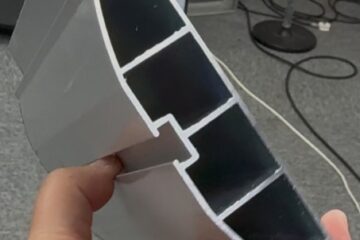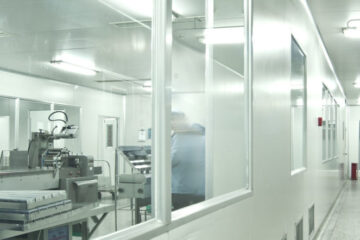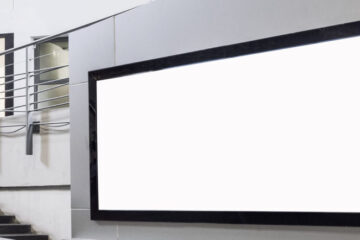In modern cities, lightbox advertisements have become an indispensable part of the streetscape. Whether it’s commercial streets, subway stations, bus stops, or shopping centers, various forms of lightbox billboards can be seen everywhere. The production of these lightbox billboards cannot do without an important material – lightbox aluminum materials. Today, let’s delve into some knowledge about lightbox aluminum materials.
I. Definition and Uses of Lightbox Aluminum Materials
Lightbox aluminum materials, as the name suggests, are aluminum profiles widely used in the production of advertising lightboxes. With their aesthetic appeal, they have become the material of choice for making lightbox billboards. Lightbox aluminum materials are not only used for traditional advertising lightboxes but also find applications in exhibition displays, mall decorations, home decor, and many other fields.
II. Classification of Lightbox Aluminum Materials
Lightbox aluminum materials come in a wide variety, which can be classified into several categories based on shape, purpose, characteristics, etc.:
- Lightbox Aluminum Profiles with Corner Connectors: The corners are connected with plastic connectors, available in various specifications such as 3cm, 5cm, 9cm single-sided, as well as 9cm double-sided, 10cm, 12.5cm, 13cm, 14cm, 16cm, etc., with a length of 6 meters.
- Bendable Lightbox Aluminum Profiles: These require special bending machines to form specific shapes, such as squares, circles, ellipses, etc., and are widely used in the production of vacuum-formed lightboxes. Available in specifications like 6cm, 8cm, 10cm, 15cm, etc., with a length of 6 meters.
- Ultra-Thin Lightbox Aluminum Profiles: Used for making various types of ultra-thin lightboxes, featuring aesthetic appeal and easy graphic replacement. Specifications for open-type ultra-thin lightbox aluminum profiles include a frame width of 4cm and a finished thickness of 2.8cm for small aluminum ultra-thin lightboxes, as well as a frame width of 6cm and a finished thickness of 4.2cm for 6cm double-sided ultra-thin lightboxes, etc.
- LED Electronic Display Lightbox Aluminum Profiles: Used for making LED electronic lightboxes, available in both curved and straight shapes. Specifications include curved 9cm (width) × 3.5cm (height) × 6m (length), and straight 9cm (width) × 4cm (height) × 6m (length), etc.
- Tension Fabric Lightbox Aluminum Profiles: Used for making large outdoor fabric lightboxes, with specifications such as 9cm (height) × 6cm (width) × 6m (length), 11.2cm (height) × 10cm (width) × 6m (length), etc.

III. Characteristics and Advantages of Lightbox Aluminum Materials
- Aesthetic Appeal: Lightbox aluminum materials have a neat appearance and smooth lines, enhancing the overall aesthetic of lightbox billboards.
- Lightweight and Sturdy: Aluminum has a low density, making the lightbox lighter and easier to install and transport. At the same time, aluminum is strong, ensuring the structural stability of the lightbox and resistance to deformation or damage.
- Corrosion Resistance: Aluminum has good oxidation and corrosion resistance, maintaining stable performance in harsh environments and extending the lifespan of the lightbox.
- Easy to Process: Aluminum is plastic and easy to cut, bend, weld, polish, and undergo surface treatment, meeting the needs of lightboxes of different shapes and sizes.
- Cost-Effective: Compared to other metal materials, aluminum is relatively affordable, giving lightbox aluminum materials an advantage in cost control.
IV. Production and Applications of Lightbox Aluminum Materials
The production of lightbox aluminum materials typically involves design, mold opening, cutting, bending, welding, polishing, and surface treatment, among other processes. Surface treatment can adopt various techniques such as spraying, electrophoresis, and anodizing to meet different customer needs.
In terms of application fields, lightbox aluminum materials are widely used in the advertising industry, exhibition display industry, mall decoration industry, and home decor industry, among others. With the rapid urbanization and the prosperity of the advertising industry, the demand for lightbox aluminum materials is continuously increasing.
V. Conclusion
As an important material for making lightbox billboards, lightbox aluminum materials play an increasingly significant role in the advertising industry due to their aesthetic appeal, lightweight and sturdy nature, corrosion resistance, ease of processing, and cost-effectiveness. In the future, with the continuous advancement of technology and changes in the market, the application fields and performance characteristics of lightbox aluminum materials will continue to expand and improve.


